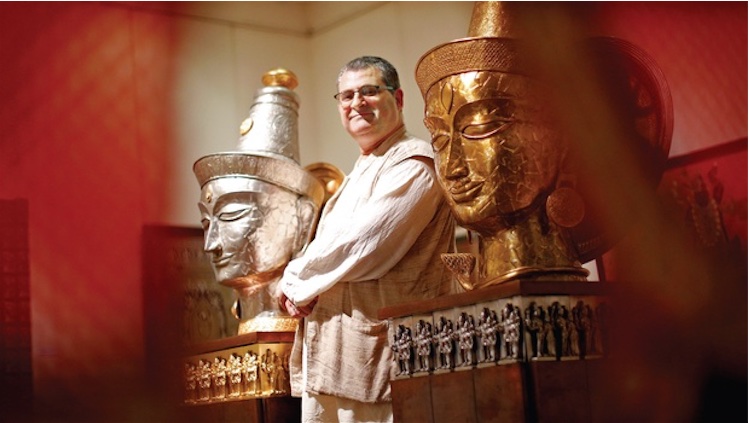When Art Becomes a Dialogue Between Faiths
By Jasodhara Bhanerjee | May 01, 2015

Martin Gurvich is the founder of the Museum of Sacred Art in Radhadesh, Belgium. The son of famous Uruguayan artist José Gurvich, Martin’s deep involvement with spirituality and the Iskcon movement has found manifestation in the ongoing Sacred Arts Festival at New Delhi’s Lalit Kala Akademi, which has been curated by Sushma K Bahl. Excerpts from an interview:
Q. What made you start the Museum of Spiritual Arts?
Martin Gurvich: It is a spiritual journey that started after my university studies in the US and after many years of practicing Gaudiya Vaishnava and serving Iskcon. The art part came out because of my previous life: My father was a very well-known artist and from there arose the interest. And there was a connect with Indian art, and Indian spiritual art. That connection started about five years ago with the humble attempt to have a gallery or a museum in Radhadesh, where I live. It just focussed on traditional art, mainly Vaishnava art from Rajasthan and Gujarat. Then it became a journey… one spiritual journey within another spiritual journey. I made a big collection of spiritual Indian art, including contemporary, tribal art. It was a small project with maybe 100, 200 works of art.
There is now one museum in Belgium, one in Italy. We are hoping to open more branches where there are different Iskcon projects. And now we have this big art project called ‘Forms of Devotion’ in India this year.
Q. How did you get introduced to Indian art?
MG: It was quite abrupt. I was studying political science at the University of Syracuse in the US, and although it was not overnight, but quite suddenly, I began to feel the need for spiritual practice and philosophy. So I started to read books on Buddhism and Hinduism, different interpretations of Hinduism. And then my interest became quite strong, and my interest for my regular studies and in other things dwindled. There was a very strong calling from within me to go to India, and I began to make arrangements to come to this country.
I had seen the Hare Krishna movement in New York, when I lived in Manhattan for many years, but I was a child at that time. I met the devotees in a serious way in Paris in 1982. In 1989, I came to Mumbai, and although I had been a devotee for seven years by then, it was still a cultural shock when I came here. Since then, I have been coming to India very often, for pilgrimages of course, and we have a large Indian boutique in Radhadesh and I had been shopping for that for the past 15 years.
Read more: http://forbesindia.com/printcontent/40067














